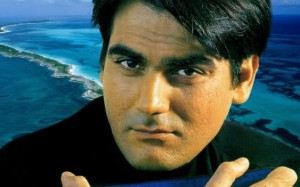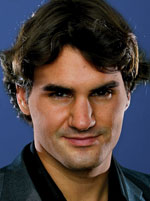It just so happened that my project and my client decided they wanted me in UK in a week when England was on the brink of elimination from the Football World Cup 2010 and when John Isner and Nicolas Mahut produced an 11 hours 5 minutes long monster marathon in the first round of Wimbledon.
I had spent close to 8 months in London from early October 2001 to late May 2002. But my main regret from trip was that I had no photographs from the more touristy places of London thanks to a rather debilitating bout of illness that killed my will to venture outdoors for the last few weeks of my trip. So when I got the opportunity to travel again, I was determined to fill up the missing pictures from London in my photo album.
If you know me well, the only sport I enjoy following more than Tennis is Cricket. Since India doesn’t have any matches scheduled in Lord’s next week, I accepted Wimbledon, the Mecca of Tennis with open arms. A couple of colleagues from work, Gaurav and April picked today for the visit. The plan was to get there after 5:00 PM when ticket prices go down. I was apprehensive, however, since today was a Friday and last year’s Champion Roger Federer and the runner-up Andy Roddick both had third round matches. I was expecting long queues.
Given that I was changing hotels today after an unsatisfactory experience at Hilton Croydon, I decided to first drop off my baggage at Hilton Euston. The journey from Croydon to Euston took me time because I had to familiarize myself with the Oyster ticketing system that did not exist back in 2001/2002. After checking into the hotel it took me some more time to top up my Oyster card so that I could travel to Wimbledon. It didn’t help that the queues were long at rush hour and my credit card got rejected for some arbitrary reason the first time I tried to buy.
Anyway, I reached Wimbledon station at about 5:25 PM. By then Gaurav and his brother Saurabh were already in the queue for tickets, which by their estimate was at least 500 people long. I still hadn’t gotten to the stadium, so this was depressing news. But I anyway decided to take a shuttle from Wimbledon station to the park. After I disembarked I asked one of the people there as to where I could buy tickets. Thinking back, his directions were eerily similar to what the bystanders at Surat Railway Station had told me when asked where the bus stop was. I walked a good amount and at a pretty brisk speed, passing the stadium on my way.

The Stadium from outside

After walking seemingly endlessly I finally reached the entrance of Car Park 10, where the queue started for the tickets. Actually the queue started at least 200m inside the car park. By the time I joined the queue, though, it was 6:00 PM and Gaurav and Saurabh were already chugging along. To give you an estimate, right about the court entrance where you purchase tickets, the queue index is A, where I was standing was K9 and Gaurav was probably around F. It had taken him an hour to get there.

